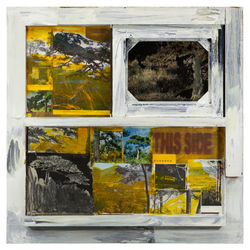In Chinese art education system, there has always been a focus on paintings. A signature theme of modern Chinese art has been established since “Cynical Realism” and “Political Pop”. Historical events have made this direction inevitable. Ever since the globalization of modern Chinese art, it has been facing the destiny of “being chosen” by the western modern art power. While appreciating modern Chinese art for its exoticness, the western world starts paying attention to the special system that generates the different art, which happens to be in accordance with the commercialization of art. However, this doesn’t affect the importance of those arts in winning modern Chinese art its global reputation and development.
The break-out of 2008 financial crisis not only changed the situation of global economy, but more deeply affected global politics, culture and even the valuations of cultures. When comparing to the developments of Chinese contemporary art in nearly thirty years, this moment also marked the watershed of academic system and even commercial values of Chinese contemporary art. After going through the financial crisis, an evolution from the younger generation has quietly started, which is reflected in the all around soaring in the process of urbanization and commercialization of China against the world patter today. Along with the arriving of a stage of internet and image, an overall imagination about Chinese themselves and the world was brought to Chinese people; meanwhile, such a rapid development brought to Chinese society and people some kind of unbalance and enormous uncertainty, which also brought to contemporary artists the new resource for artistic creation. Artists started to intervene into contemporary life with a more pluralistic creation posture; they interact with the brand new social life with their sensitivities, their creation forms start to intersect with various media and brought into brand new artistic forms and expression ways.
 Ma KeSmog oil on canvas 180 x 320 cm 2014 |  Ma KeFemale Portrait oil on canvas 96 x 81 cm 2016 |  Chen YujunWooden House No.20161102 oil on acrylic 120 x 87 cm 2016 |
|---|---|---|
 Luo QuanmuHow's the Honey Made oil on canvas 192 x 304 cm (192 x 152 cm x 2 pics) 2012 |  Zhang WenrongUs oil on canvas 260 x 145 cm 2017 |  Li QingEighteen Pines wood, collage, oil on plexiglass, charcoal on brocade 99 x 99 x 7 cm 2016 |
 Chen KeDance mixed material on canvas 160 x 110 cm 2015 |  Li ChanglongWhite Gloves oil on canvas 160 x 120 cm 2017 |  Xiang NanThe Bull and The Sea No.9 oil on canvas 206 x 180 cm 2017 |
 Xiang NanThe Bull and The Sea No.8 oil on canvas 206 x 180 cm 2017 |  Liu JiahuaPseudo-order No.18 oil on acrylic 145 x 120 cm 2016 |  Liu JiahuaKun oil on acrylic 150 x 200 cm 2014 |
 Li QingImages of Mutual Undoing and Unity·Love 201501 photograph (2pics) oil on canvas (2pics) 80 x 80 cm (each) 2015 |  Luo QuanmuSleepless City oil on canvas 150 x 110 cm 2017 |


ZHU TONG - Curator
b.1970 Nanjing, China
Director of Avant-garde Contemporary Art Center, born 1970 in Nanjing, China. His curatorial experiences include influential exhibitions such as “Archaeology of the future: The Second Triennale of Chinese Art”, “AND-WRITERS: the 1st Nanjing Biennale”,“OSCURITÃ, Collateral Events of the 54th International Art Exhibition, the 54th Venice Biennale”, international itinerant show“Within Sight –Chinese New Painting at Post Financial Crisis Era”. He has published academic monographs likeEvolution,Beyond Dimension, Fancy·Dream, to name but a few. As a famous curator of contemporary art, he has been closely engaged in the art circle home and abroad.
LI QING
b.1981 Huzhou, China
Li Qing graduated from the Oil Painting Department of China Academy of Art in 2007. He has had solo shows at Arario Museum, Seoul, Korea; Goethe Institute, Shanghai, China; Tomás y Valiente Art Centre, Madrid, Spain, among others. A number of prestigious art institutes have also included his works for group shows, such as Shanghai Biennale; The 55th Biennale Di Venezia Special Invitation Exhibition; Fukuoka Asian Art Museum, Fukuoka, Japan; São Paulo Museum of Contemporary Art, São Paulo, Brasil; Asian Art Museum of San Francisco, San Francisco, USA; National Gallery of Indonesia, Jakarta, Indonesia; etc. His works are collected by many art institutes and foundations, such as Deutsche Bank, Germany; Institut Valencia d’Art Modern, Valencia, Spain; Long Museum, Shanghai, China; Yuz Foundation; Budi Tek Collection, Shanghai, China; DSL Foundation, Paris, France; Arario Museum, Seoul/Jeju, Korea; Initial Access; Square Gallery of Contemporary Art, Nanjing, China; Himalayas Art Museum, Shanghai, China; etc.

CHEN YUJUN
Born 1973
Putian, Fujian, China
Chen Yufan’s minimalist abstract paintings hover between visual art and literature—or at least the appearance of literature. Buddhist, says the rhythmic process of making his works becomes intuitive, almost automatic. There is a reason behind the titles, however. “You can see a double standard in culture, politics and the acts of individuals,” the artist says. This lack of integrity, he suggests, is turning philosophy into an unreadable book, a screen that blacks out the truth.
Inquire about this exhibition

